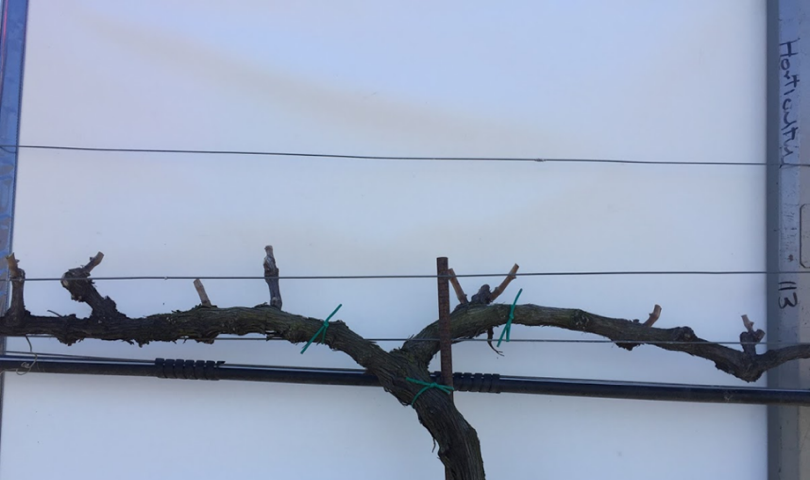By Clint Thompson
University of Georgia Cooperative Extension Fruit Disease Specialist Phil Brannen reminds grape producers that fungicides need to be applied as they prune their crop ahead of next season.
“While they’re pruning and during the time they’re pruning, we do have some concerns about pruning wound injuries and pathogens that come in on pruning wounds. We do recommend they spray with fungicides for those pruning wound pathogens,” Brannen said.

Pruning is vital to the long-term health and sustainability of the vineyard. The wintertime is usually reserved for pruning practices for grape vineyards. Pruning does lead to “bleeding” or an open wound that makes the vine susceptible to disease pathogens. Growers need to apply fungicides the day of pruning to avoid disease infection.
“Grapes, like peaches, apples and a lot of commodities that are the perennial-type of crops, have to be pruned every year. We prune grapes in January and February for the most part. When you go out to the vineyard, all of those grapes have been pruned back in the wintertime. They’re basically cutting off the old canes and cutting them back down to two or three buds on each of the canes, separating them out and establishing the plant for this year,” Brannen said. “When you make that pruning cut, that’s an open wound, and you get pathogens that come in on those wounds as well. To prevent that pathogen from coming in, you spray fungicides the day of pruning.”
Ineffective or incomplete dormant pruning leads to excessive shoot density and a congested canopy that impairs airflow and light penetration. This, too, will create a greater vulnerability to fungal diseases.










